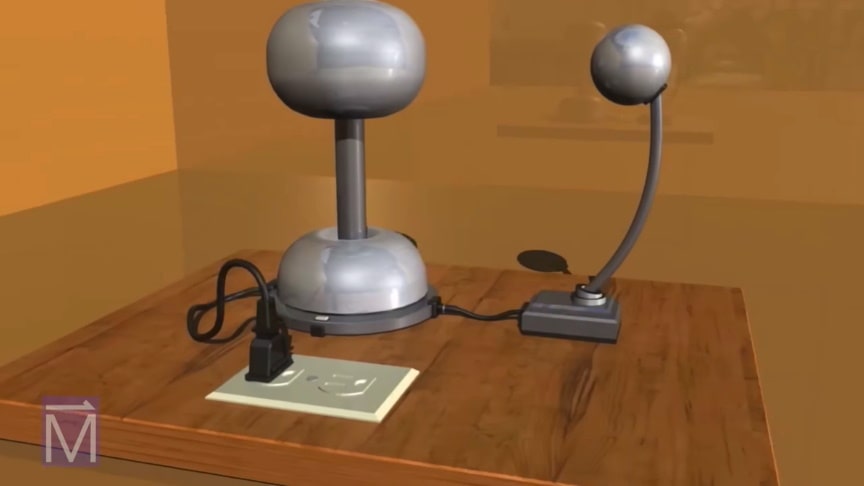Used originally to charge particles in atomic accelerators, Van de Graaff generators now educate students about electrostatics. See how they generate the static electricity that can make your hair stand on end.
source/image(PrtSc): National MagLab
A Van de Graaff generator is an electrostatic generator which uses a moving belt to accumulate electric charge on a hollow metal globe on the top of an insulated column, creating very high electric potentials. It produces very high voltage direct current (DC) electricity at low current levels.
A simple Van de Graaff generator consists of a belt of rubber (or a similar flexible dielectric material) moving over two rollers of differing material, one of which is surrounded by a hollow metal sphere. Two electrodes, (2) and (7), in the form of comb-shaped rows of sharp metal points, are positioned near the bottom of the lower roller and inside the sphere, over the upper roller. Comb (2) is connected to the sphere, and comb (7) to ground.
Advertisement
The method of charging is based on the triboelectric effect, such that simple contact of dissimilar materials causes the transfer of some electrons from one material to the other.A Van de Graaff generator pulls electrons from the Earth, moves them along a belt and stores them on the large sphere. These electrons repel each other and try to get as far away from each other as possible, spreading out on the surface of the sphere.It provides a convenient path for electrons to move to the ground./wikipedia











